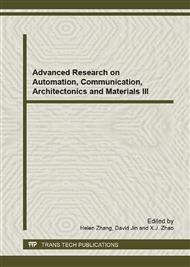p.186
p.191
p.195
p.199
p.203
p.208
p.215
p.219
p.223
Research on Mechanical Automation with Vehicle’s Reconstruction Analysis Model of Offset Collision Accidents
Abstract:
In order to provide a theory algorithm and a mechanical automation process for simulation and reconstruction analysis of offset collision accidents, the application limitation of traditional one-dimensional collision dynamics model was summarized, on the basis of analysis. Using the principles of classical mechanics and mechanical automation, the collision dynamics model and movement trajectory model of automobile offset collision were constructed. Using the model above and PC-Crash mechanical automation software, a real accident case was analyzed. The comparative study between the reconstruction analysis results and the vehicle’s traces remained in the accident scene was conducted. The comparative analysis showed that, the turning trajectories of automobiles were consistent with the trajectories remained in the accident scene. The model is suitable for small eccentric offset collision accidents.
Info:
Periodical:
Pages:
203-207
Citation:
Online since:
August 2013
Authors:
Price:
Сopyright:
© 2013 Trans Tech Publications Ltd. All Rights Reserved
Share:
Citation:


